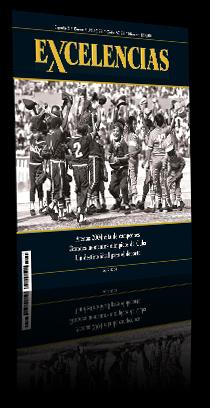Homemade Sport Items
Since the turn of the 20th century, kids on the Caribbean island of Cuba have always managed to practice the national pastime in a thousand ways. There was a time when they used to make balls out of beat-up cigarette boxes. A hard seed or a piece of rubber for a ball core could do the trick, as threads of millet or gunny were wrapped around the core and fixed with duct tape or glued ribbons.
Either in Havana or in any other town across the country, you can see children of all ages hitting rubber balls with their bare hands, or playing slo-pitch on the four corners of any crossroad that serves as a makeshift field, even though cars and pedestrians keep on moving and simply dodging the hit balls.
The incredible resourcefulness of the Cuban people saved the practice of baseball, boxing and many other sports from a noisy pratfall in the early 1960s after the U.S. government imposed an all-out embargo on the island nation. Alongside spare parts from food-making and pharmaceutical industries, they also took away baseballs and all America-made implements.
Batos: A Token of National Pride Founded in June 1965, Cuba’s Sport Industry started making the first baseballs for the National Series under the Batos trademark, a brand name that was later on splayed on gloves, chest pads and uniforms as well.
Since then, places that looked like artisans’ sweatshops at the onset, were soon enhanced and equipped with high-tech machinery. Employees were trained and experience in making wooden and aluminum bats, gloves, boxing sneakers, canoes and many other implements began to build up.
The Cuban government’s early call to make sports a massive practice at the grassroots level in which athletes could move up the ladder all the way to stardom, and be fit for international competitions, required the manufacturing of sports gears in great quantities, if we were willing to take on the challenge.
The sport industry reached its pinnacle in the 1980s as exports to Caribbean and Central American countries began. But the economic crisis unleashed by the disappearance of traditional markets and providers of raw materials from the former Soviet bloc in the early 1990s, took its toll on the making of sport implements, too.
However, “amid the shortage of raw materials, workshops never shut down. Technicians and workers came up with lots of initiatives and innovations, and solutions soon started to trickle out,” says Mercedes Rodriguez Torres, chief of Technical Development for Cuba’s Sport Industry.
The industry also played a significant role in employee training. No school in Cuba teaches students how to make sport items, like baseballs or catcher’s gears.
Weaving or spinning machines where baseballs are spun, are still running thanks to the innovations made by industry workers, Mrs. Torres adds.
New Growth Formulas According to Mrs. Torres, “as we speak, the Cuban sport industry is taking off all over again thanks in part to the implementation of new ideas, options and formulas, and to the cooperation with companies in Spain, Mexico and Canada.”
Sport items under the Darin-Batos trademark –a fruit of the collaboration with a Spanish firm- are being sold in the hard-currency market. A part of the revenues is invested in making articles for massive sports practice in the country.
Those are the blueprints the industry is dwelling on to get the necessary cash to keep the workshops running on all six. Though the idea of resuming exports to neighboring countries seems a tad farfetched right now, Mrs. Torres is not ruling it out altogether. “The human resources we count on are capable of taking in new technologies. If we come across the right financial sources, we could be soon meeting the needs of massive sport practice and of high-performance athletes.
Batos items were once certified for official competitions by the International Boxing Association and the International Baseball Federation. But the same workshops that produce baseballs for our world champions are now making oars and boats for the practice of canoeing and kayaking, including the more complex vessels for eight oarsmen with coxswain and four oarsmen with or without coxswain. They also manufacture fiberglass single-seat canoes and kayaks for our world-class competitors.
The raw material market for the making of sport items and implements is extremely pricey and as many as 5,000 different materials are required to meet the needs of all Cuban athletes, Mrs. Torres notes.
“Nevertheless,” she points out, “our former muscle-flexing industry once managed to build 571 articles in its glory days. It could even meet the needs of as many as 28 different sports. That lays bare how far we can actually get if we happen to have all the funds and resources that our work requires.”
This assertion will be now put to the test as soon as the Cuban delegation gets to Athens. Designers, tailors and seamstresses working for a well-rooted industry that’s now beginning to inch up again, have made new uniforms for most of our national teams.


































